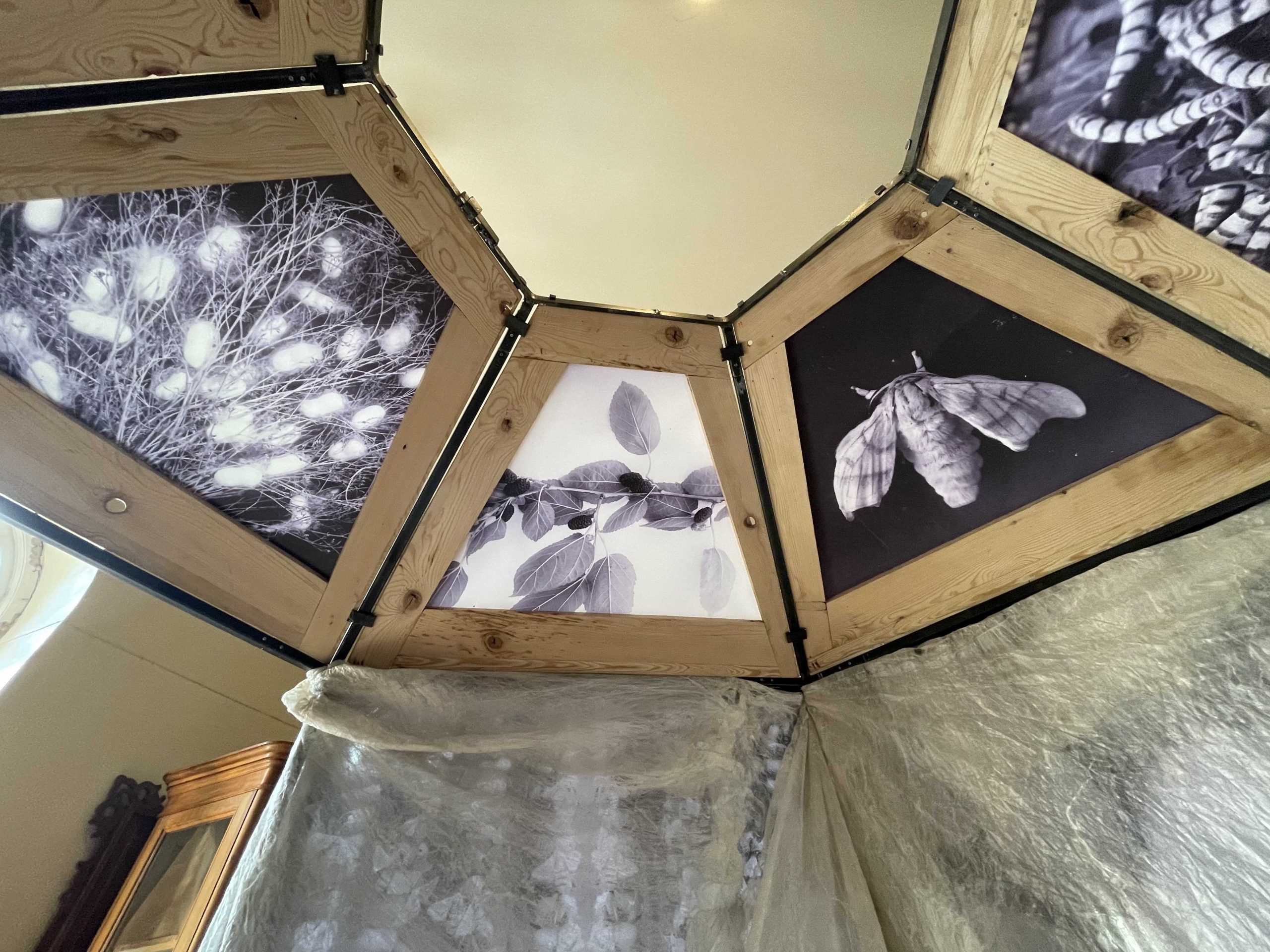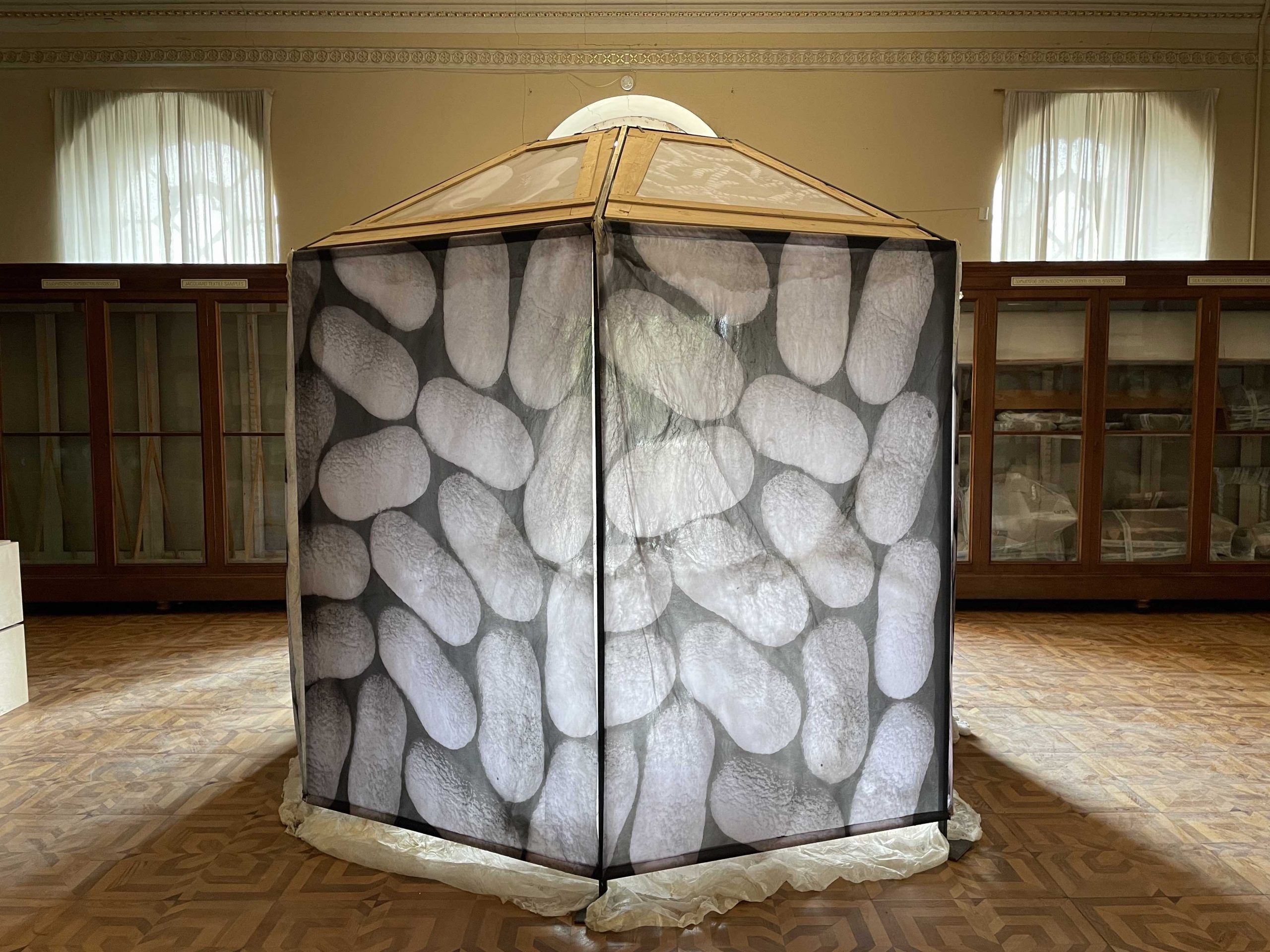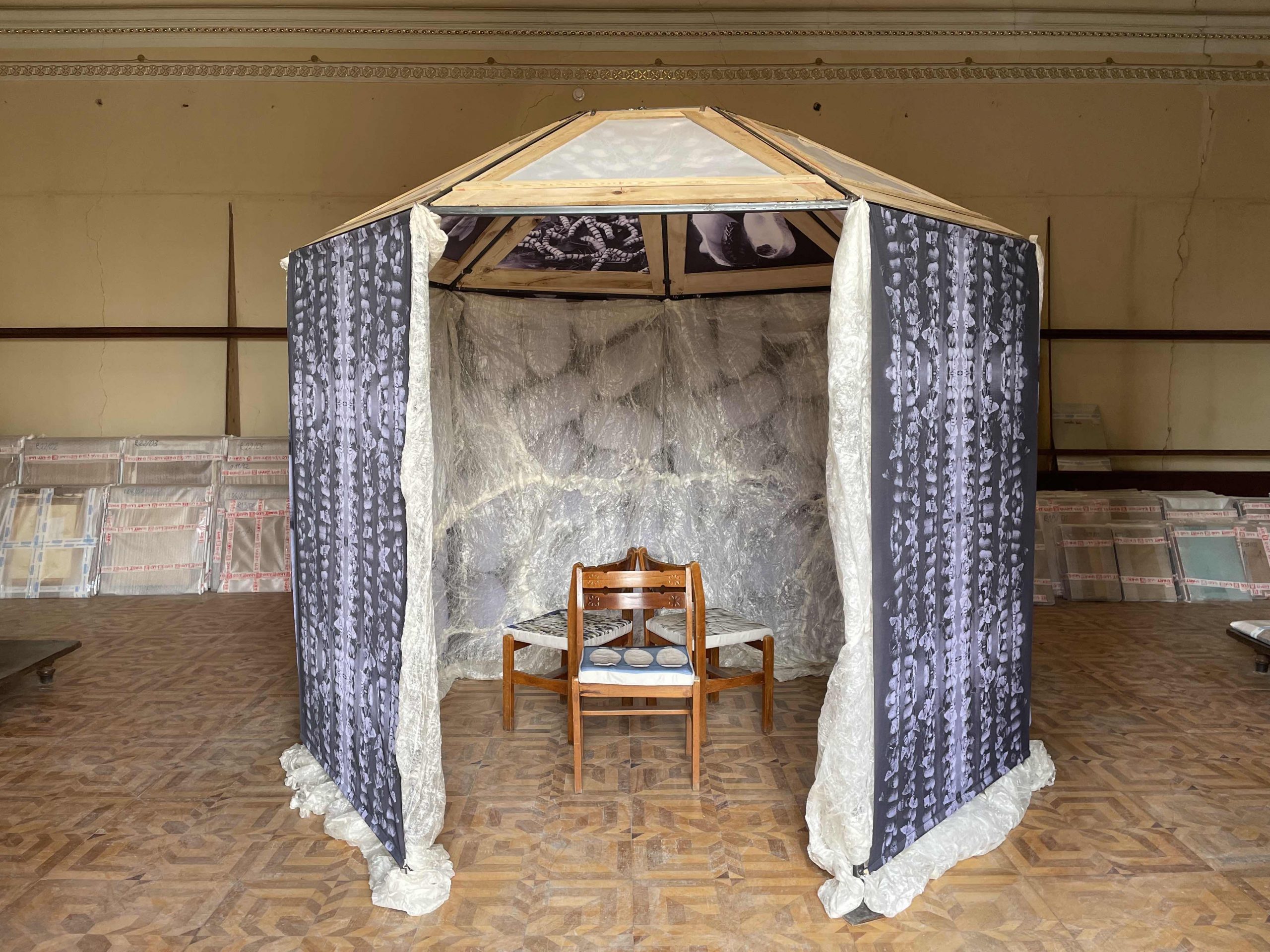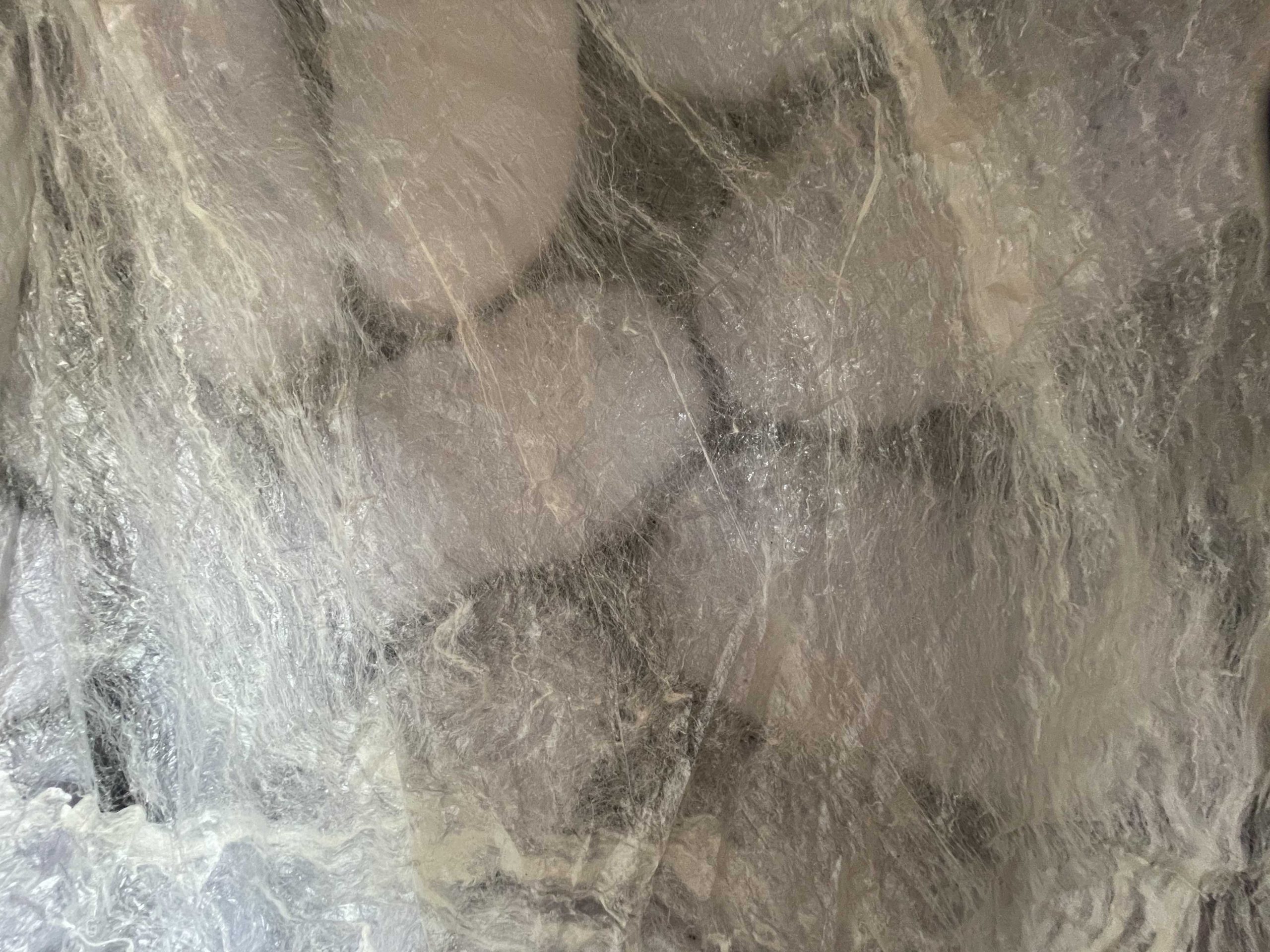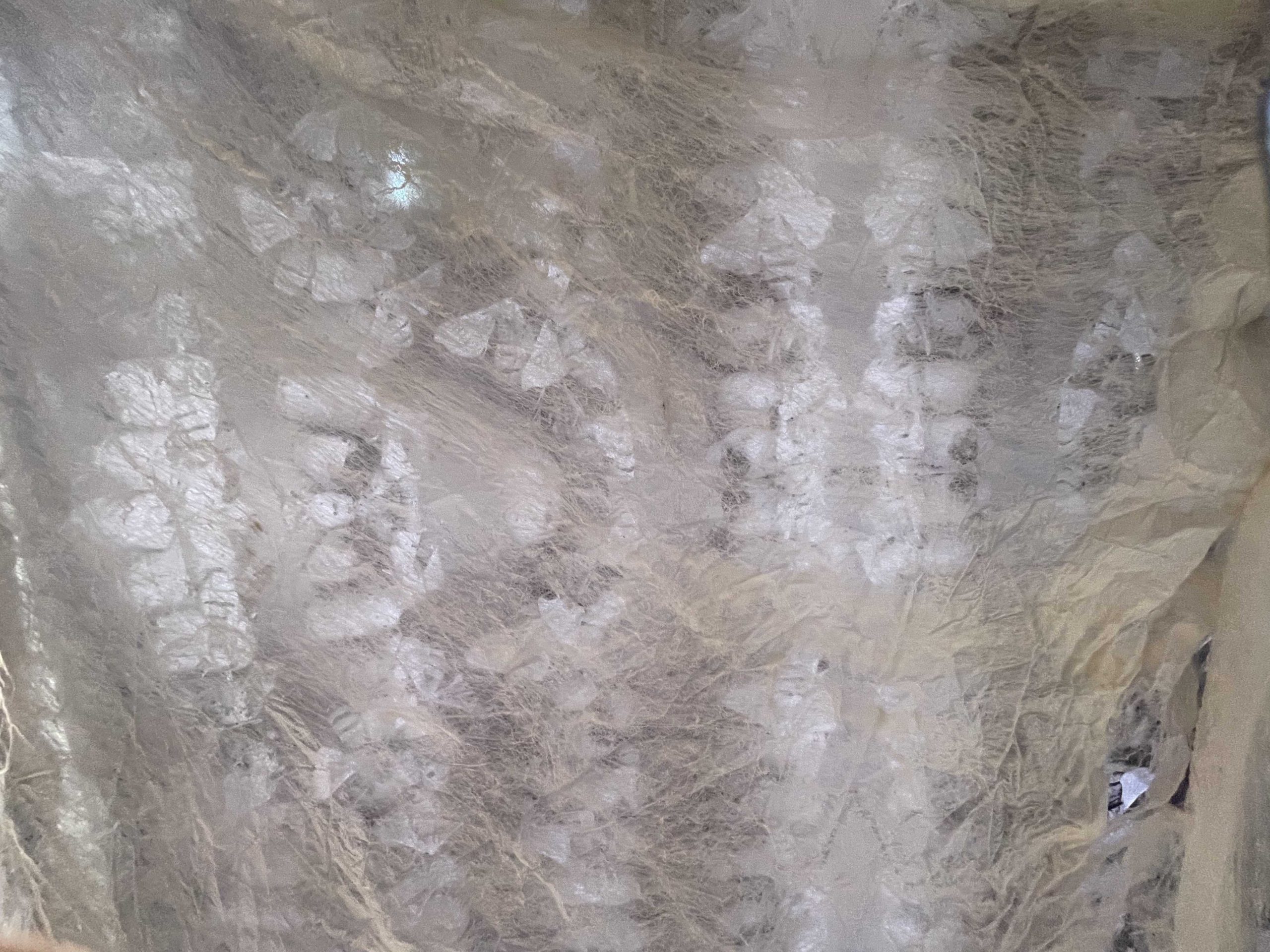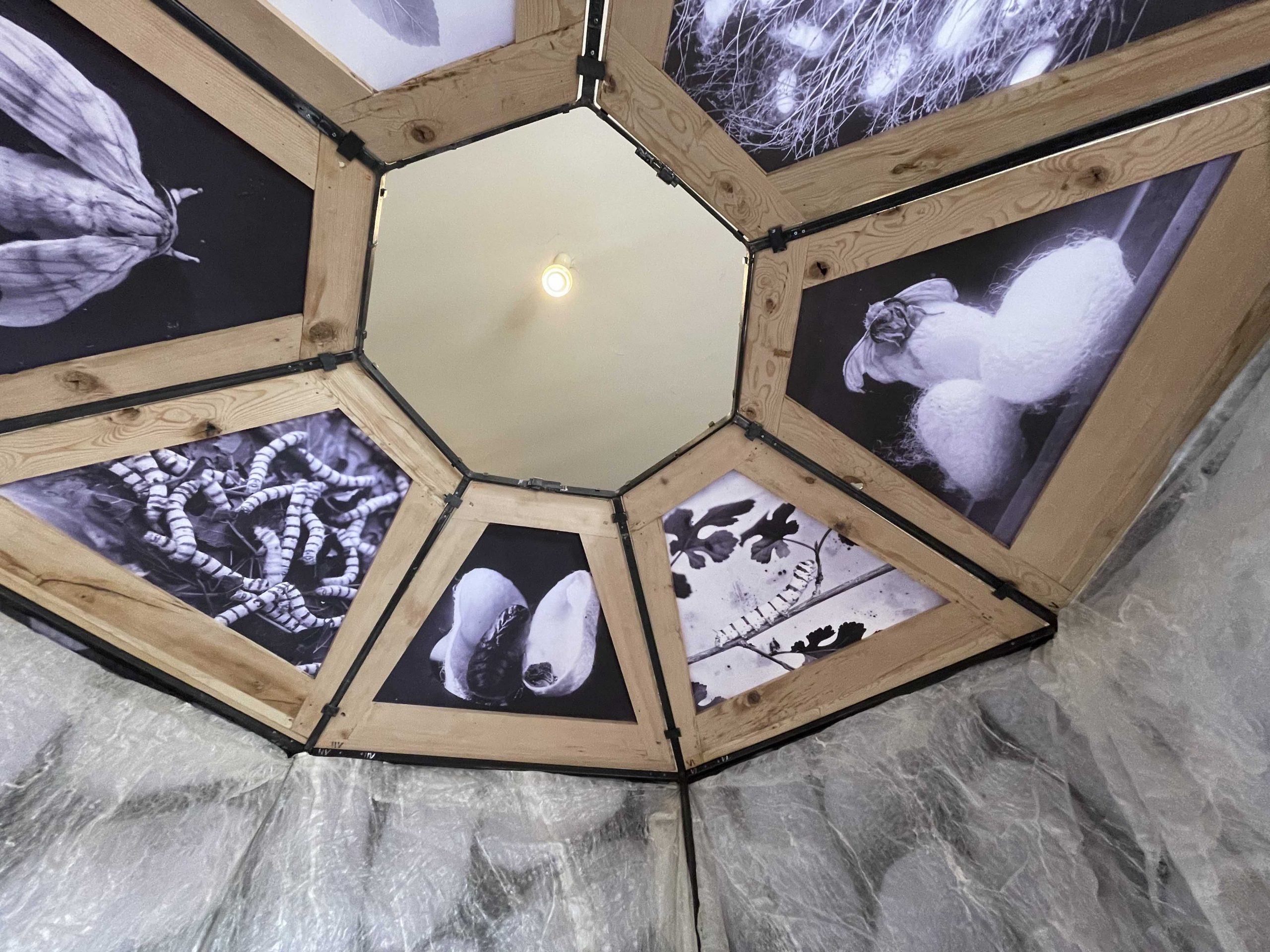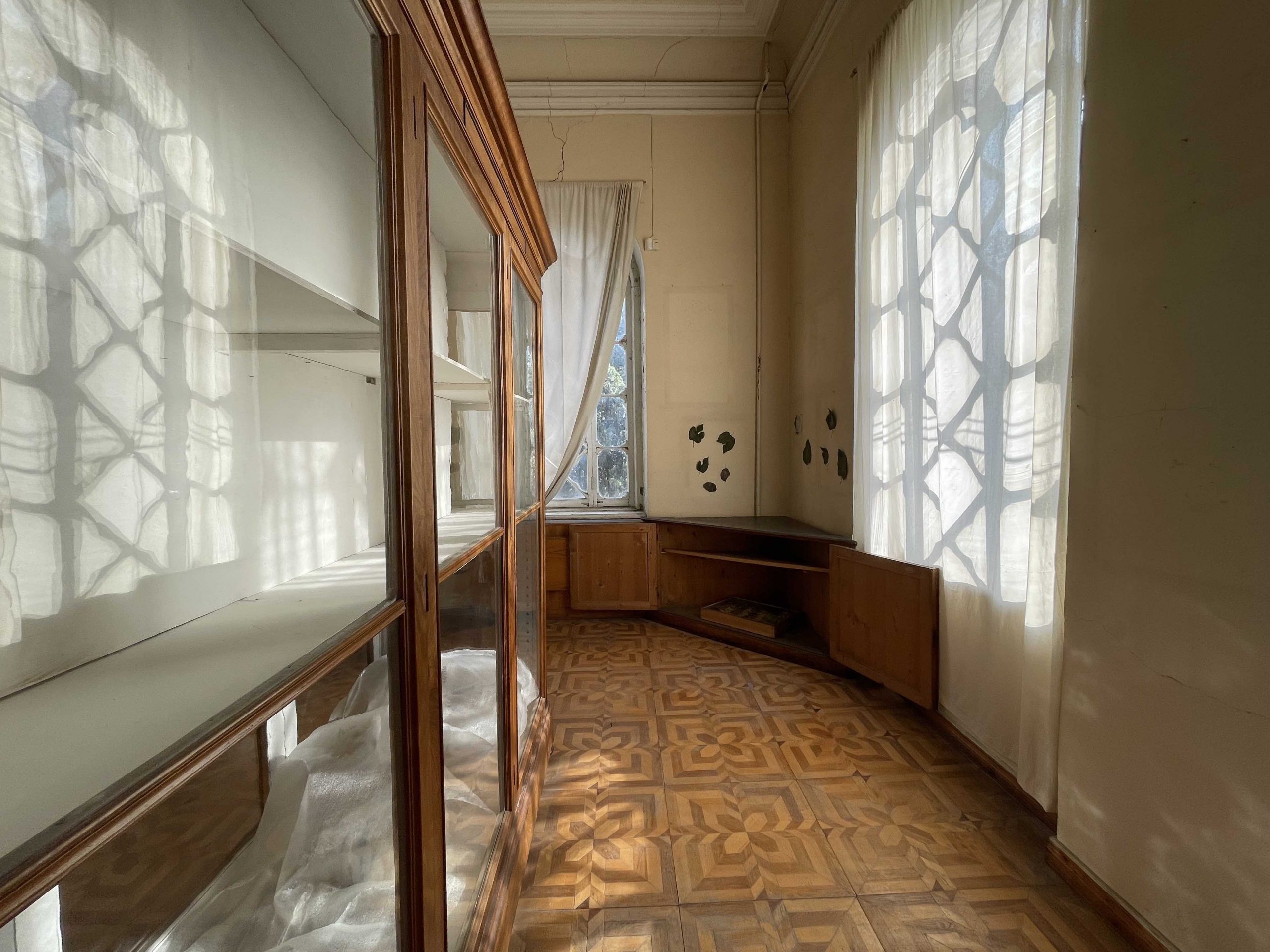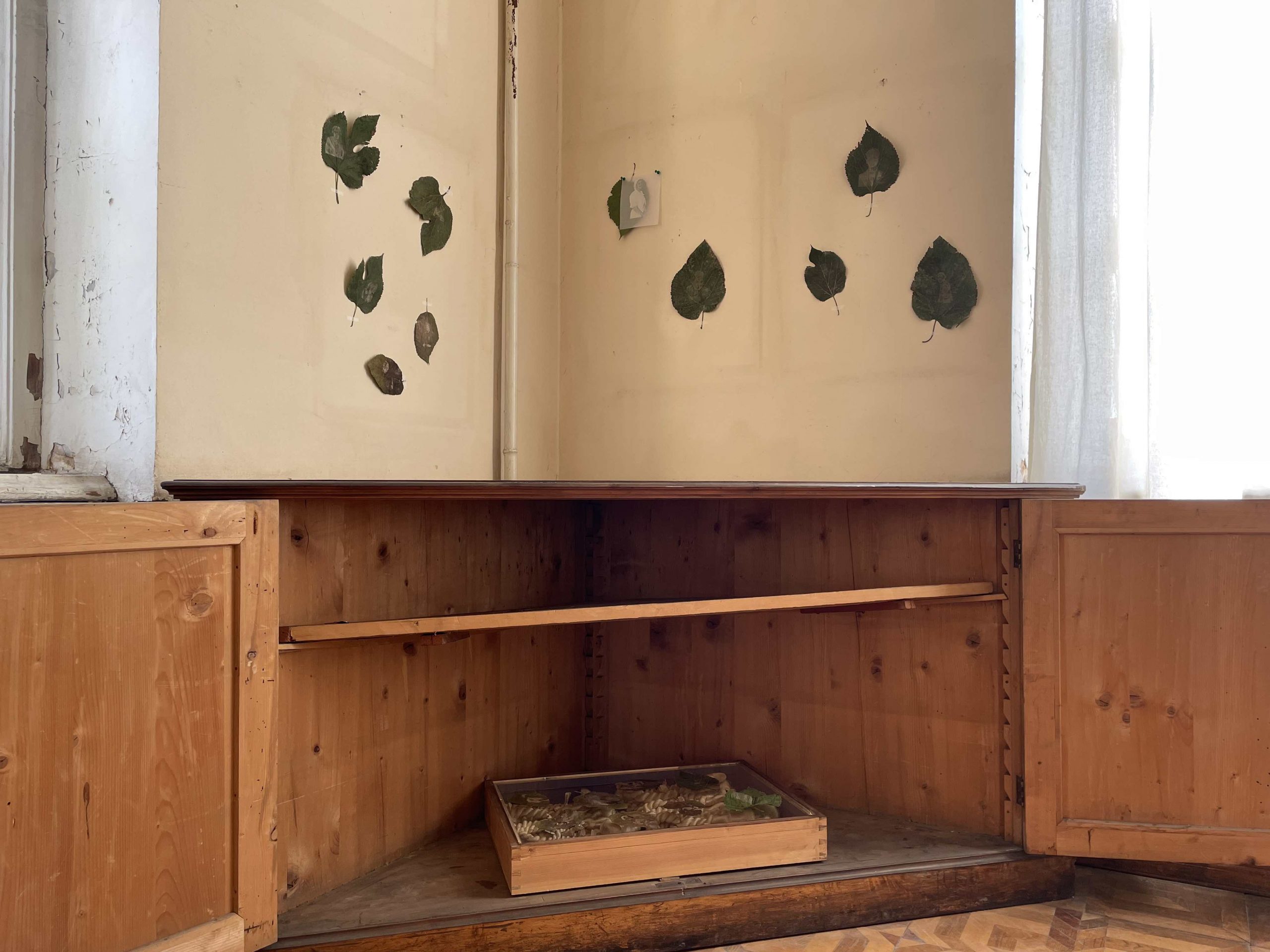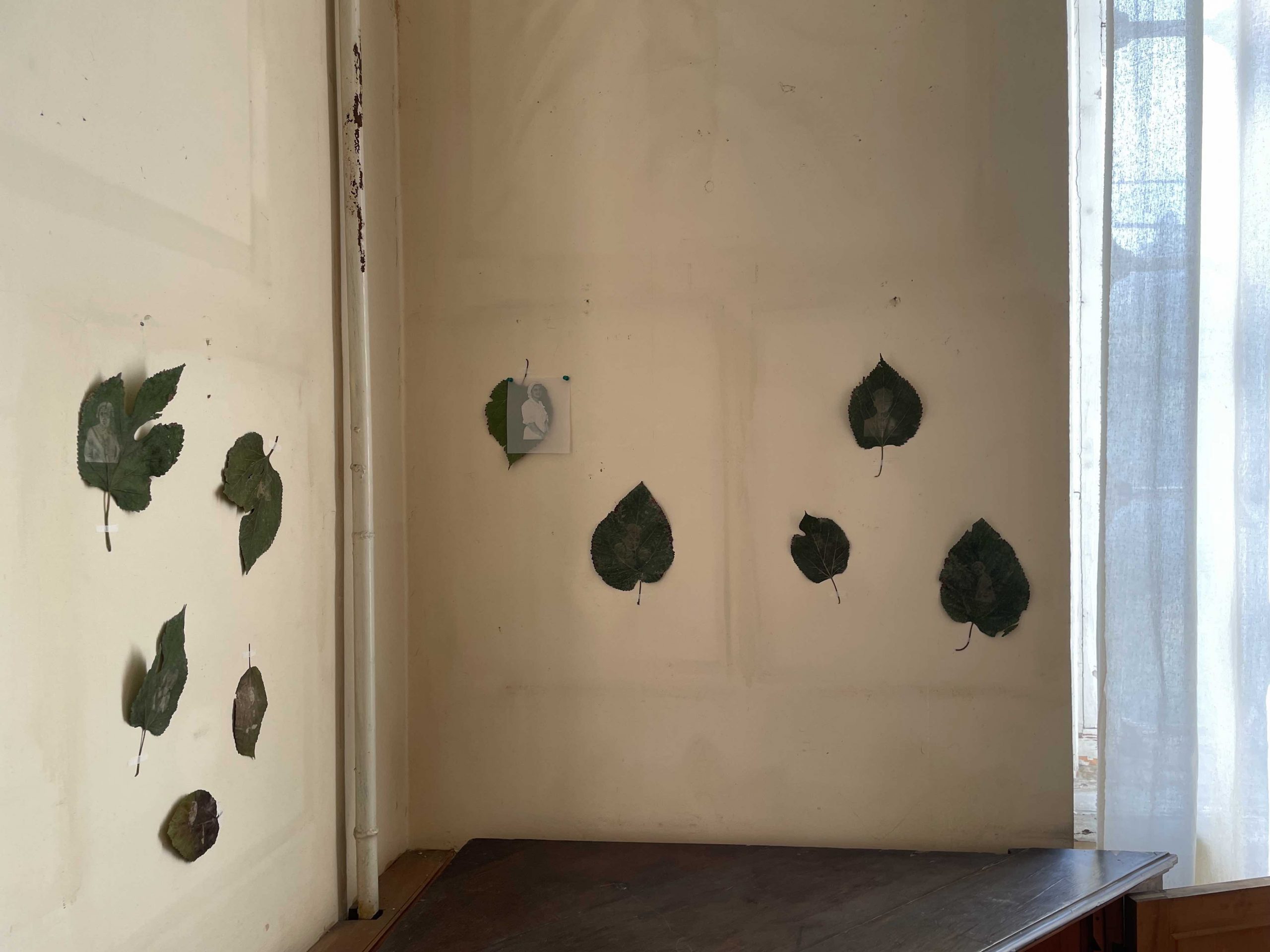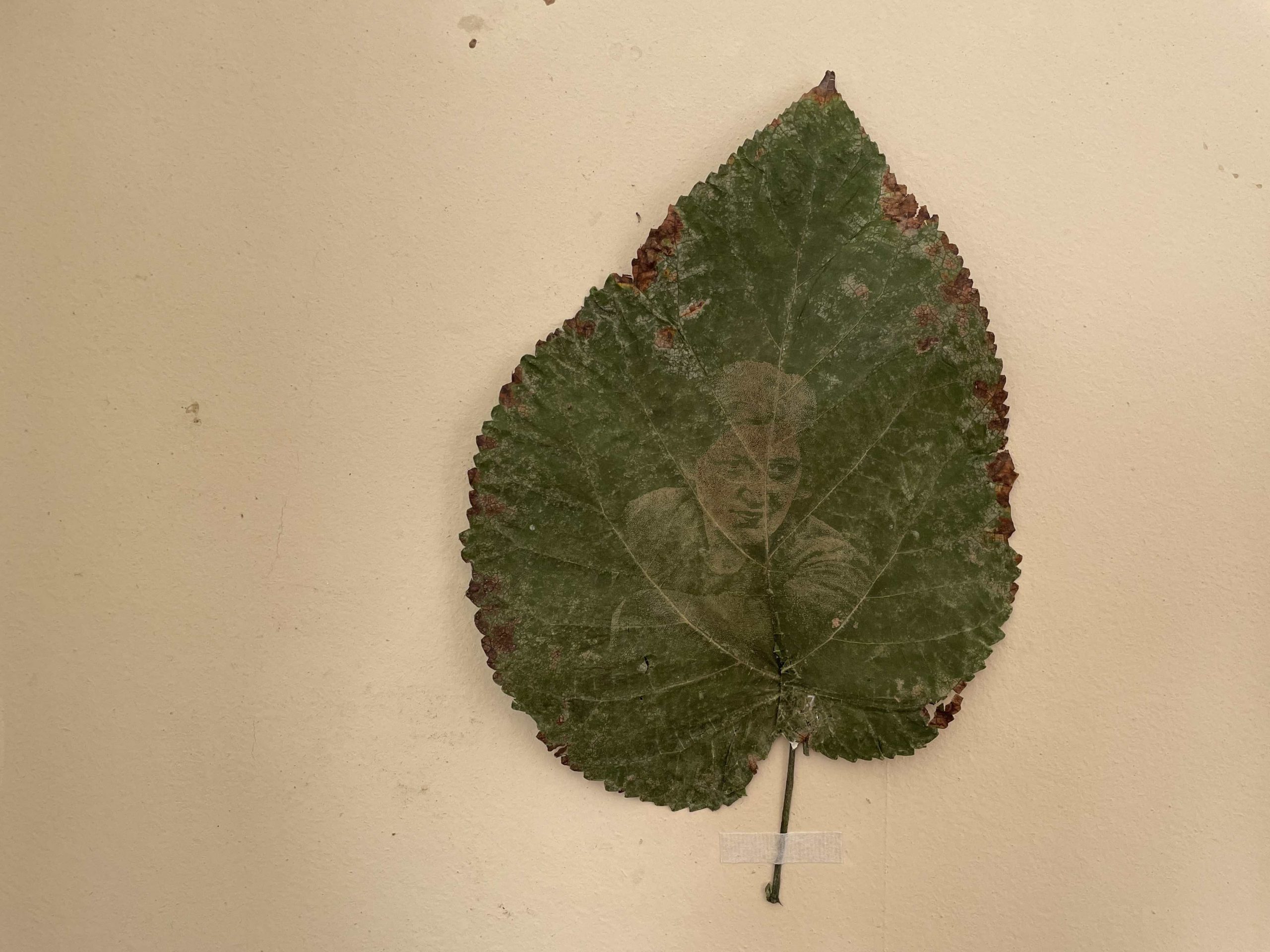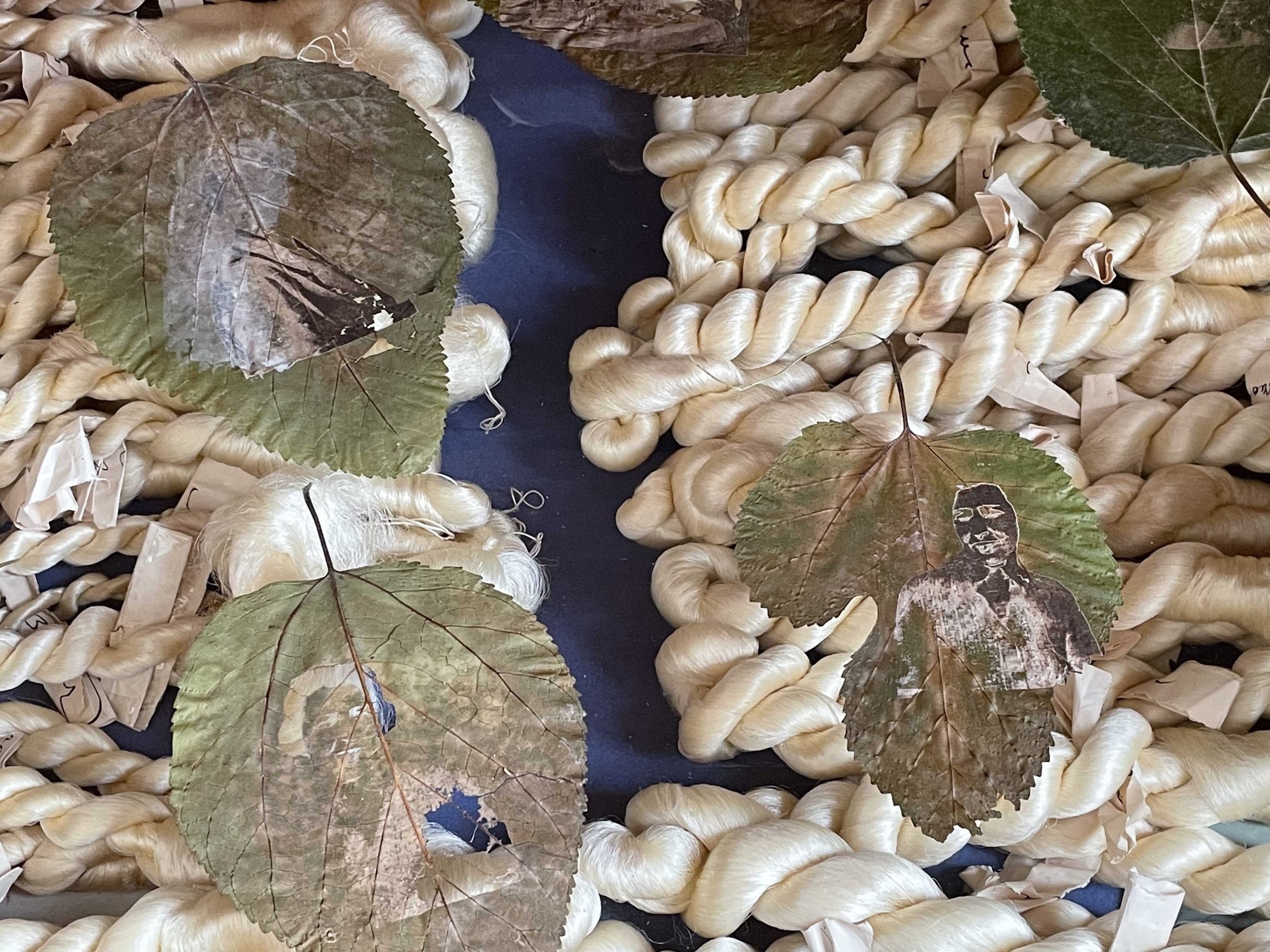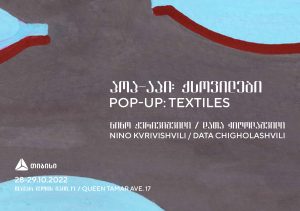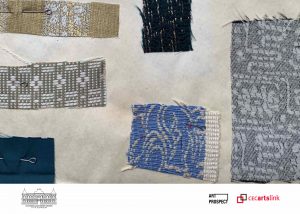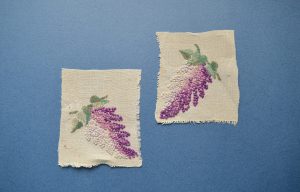Inside a “cocoon,” surrounded by a silk layer through which the images of moths and giant cocoons can be noticed; roofed with archival images of sericulture – mulberry tree and leaves, silkworms, cocoons, a pupa, moths.
Fascinated by mulberry trees, I always think of them as a starting point in sericulture. After all, its leaves are the main nutrient for silkworms. I think the mulberry tree was in a way a starting point for Carolanne Patterson’s installation – “Cocoon Room” – wherein I am attempting to meditate.
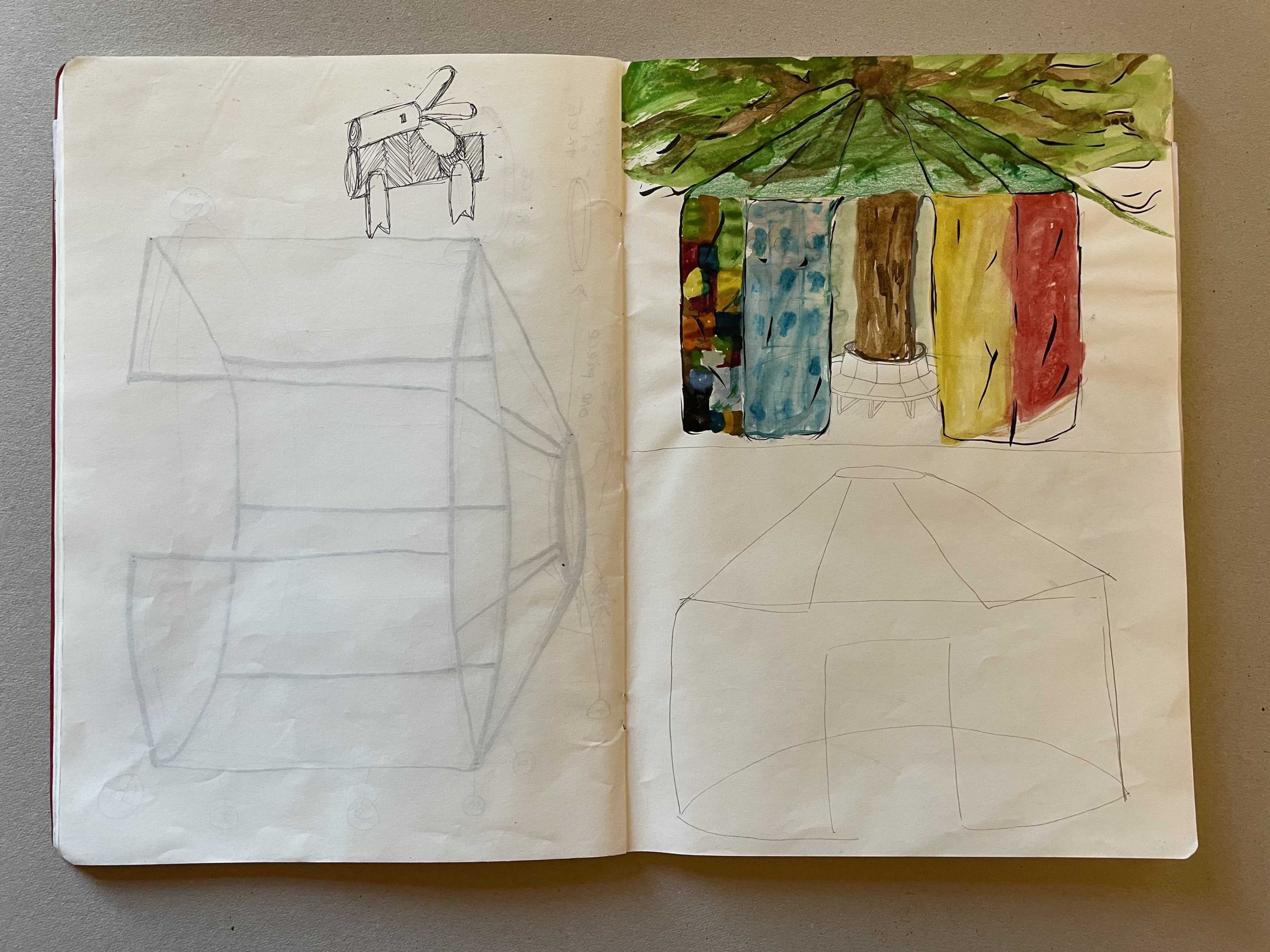
Originally conceived as an outdoor installation around a tree as a healing circle, a meditation room, it currently stands among empty vitrines and walls, and boxes and lines of wrapped muselia, as the Silk Museum is now going through a rehabilitation process. Without Museum Objects responds to the museum’s specificity and this transitional phase through different activities, and now, with all the objects from the hall wrapped, Cocoon Room gives a possibility to stay a little distanced from the noise and the routine of the outside, and meditate, or just take a breath.[1]Cocoon Room will remain installed at the museum until the end of October, 2021. If you would like to schedule a visit and spend time inside the installation, please email in prior: … Continue reading
From its open side, I catch a glimpse of Aghmashenebeli Avenue and cars, but I mostly see trees – cypresses, a wall of which shelters the museum, there’s something magical about them, there’s something magical about trees in general; plane trees, a bit further, still green under the October’s sun, trees that I will always associate with Tbilisi; similarly, I will always associate mulberries with this city, and particularly with the Didube district, where I grew up, and eating mulberries is a cherished childhood memory from the hard times in the country. It is also the area where the Caucasian Sericulture Station was established, having 25 buildings, including in the neighboring Mushtaidi Garden, having mulberry nurseries all around. However, today the Silk Museum remains with objects, photographs, and knowledge about this part of the past. Also, there’s another remaining building from the station across the street, and lots of mulberry trees around, this needs another exploration.[2]See: Dirker, O., and van der Kooy, K. (2019). Mulberry Tree Route in the Didube District of Tbilisi. In D. Chigholashvili, N. Palavandishvili, and M. Splint (eds.). Tbilisi – It’s Complicated … Continue reading
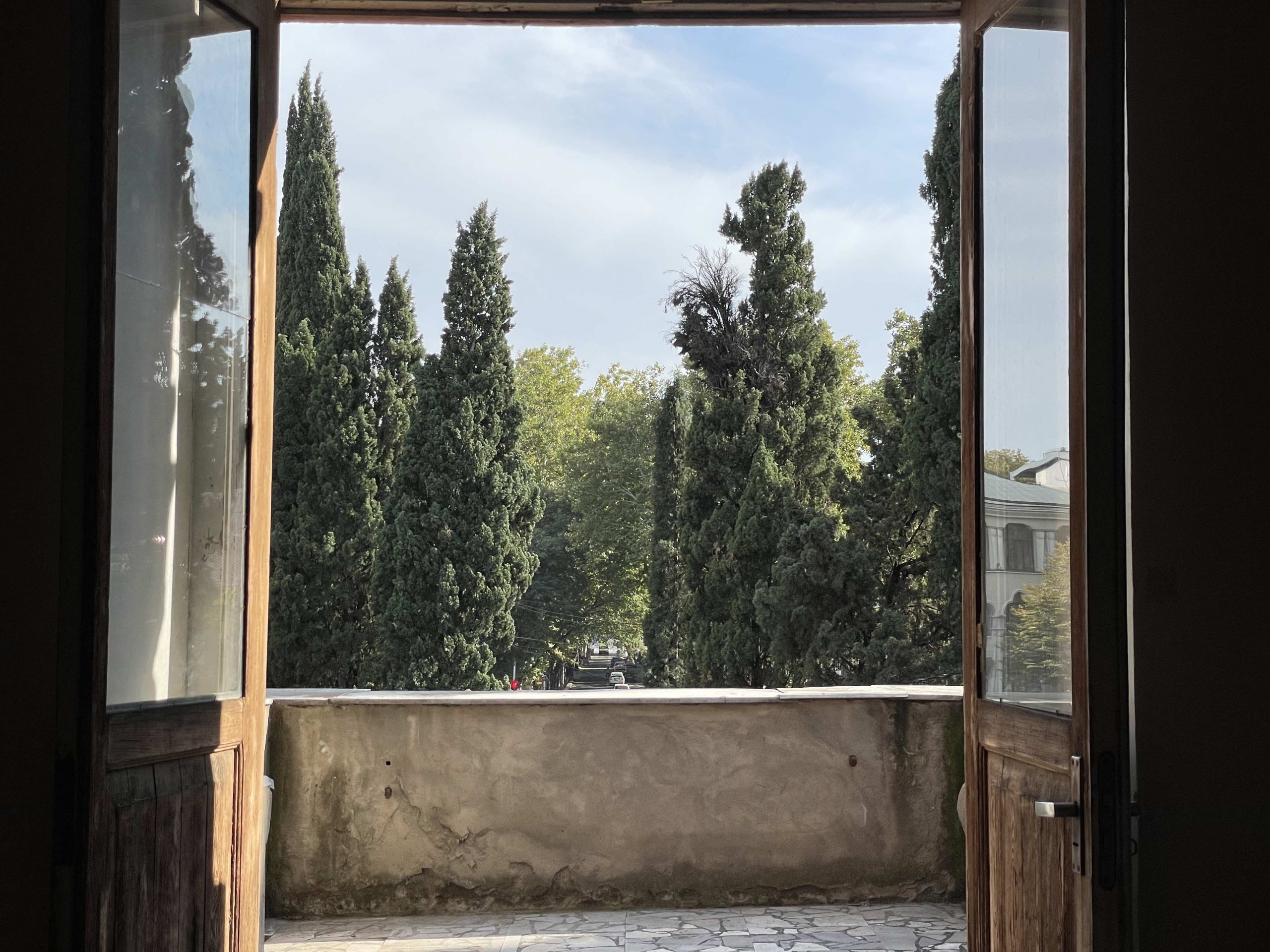
Nowadays, it’s hard to find a mulberry tree near the museum around which Cocoon Room can be temporarily installed – as some of them are near fences or roads; or if one wants to put it in the garden with historical connections to the museum, it all depends on the administration’s goodwill, as they have been given a temporary rule over this public space and currently, they look at it only commercially.
But now, only for a few minutes, I want to forget those kinds of problems and stay here, inside this cocoon at the temporarily empty museum. I just want to look at the images here, and particularly at that of a mulberry branch. The images are black and white as they are prints made from digitized glass negatives in the museum’s collection. When I look at the mulberry image, I think of diversity. At the museum, one will often hear that the Caucasian mulberry has leaves of different shapes on a single tree, or even on individual branches.
Diverse. I think of this word in Georgian (მრავალფეროვანი – mravalperovani), which is a compound of “many colors.” And then I remember the city that I am looking at, how diverse it is and at the same time, paradoxically, how much the diversity has been unwelcomed, oppressed, discriminated… This summer has shown and symbolized that quite vividly and badly, yet again. There’s so much to heal from. I want to come back to the quiet space at the museum. I want to heal. Many colors.
I think of the collection of dyes at the museum, and all its colors. They are now boxed, the vitrines are empty, and I am wondering what this space will look like after the rehabilitation, and what will stand, or be presented in the middle where I am currently sitting? Will all the diverse colors be shown and celebrated? Diversity.
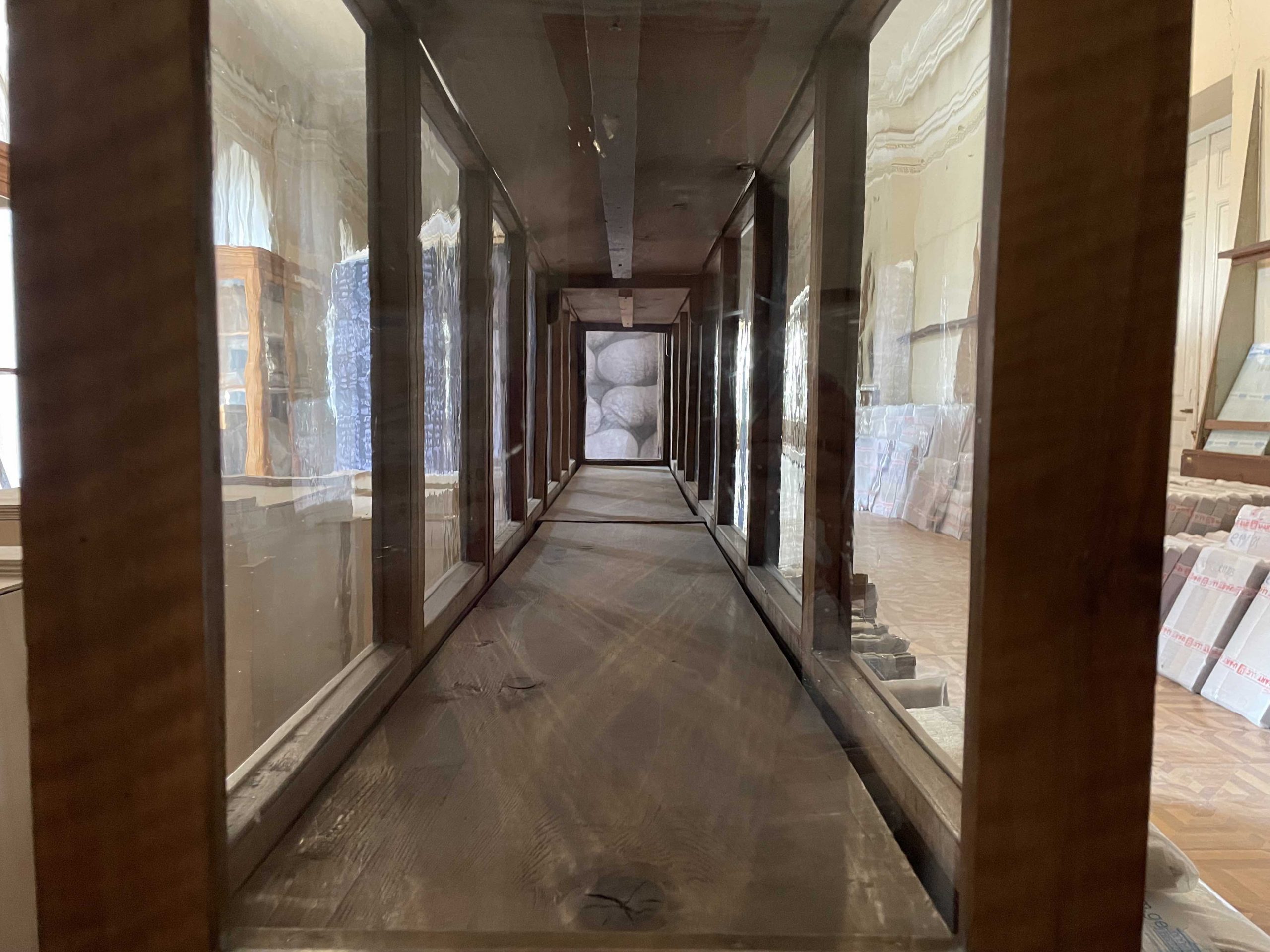
I remember a frame full of mulberry leaves with different shapes at the museum’s Mulberry Room. It was full of herbarium that is now wrapped. Currently, the traces of frames can be noticed therein. I think that one wall with the memory of frames in that room was the inspiration for Without Museum Objects and Leafeaters, its first exhibition was set up there. Now there are other leaves with portraits of people from the photo collection, including those that Carolanne Patterson was testing during her residency at the museum.
Dry leaves with laser etching on them are fragile, like portraits from the past and memories of people. Some portraits in the museum’s photo collection are easier to identify than others. I remember those faceless bodies that Nino Eliashvili created within the Leafeaters exhibition – combined through watercolor layers of different objects and forms, they carry queerness in them. It was this summer, very close to the terrible attacks, anyone who looked a little different became a target, again. How will the diversity be presented at the museums? How will it be celebrated outside, where it is very busy and loud?
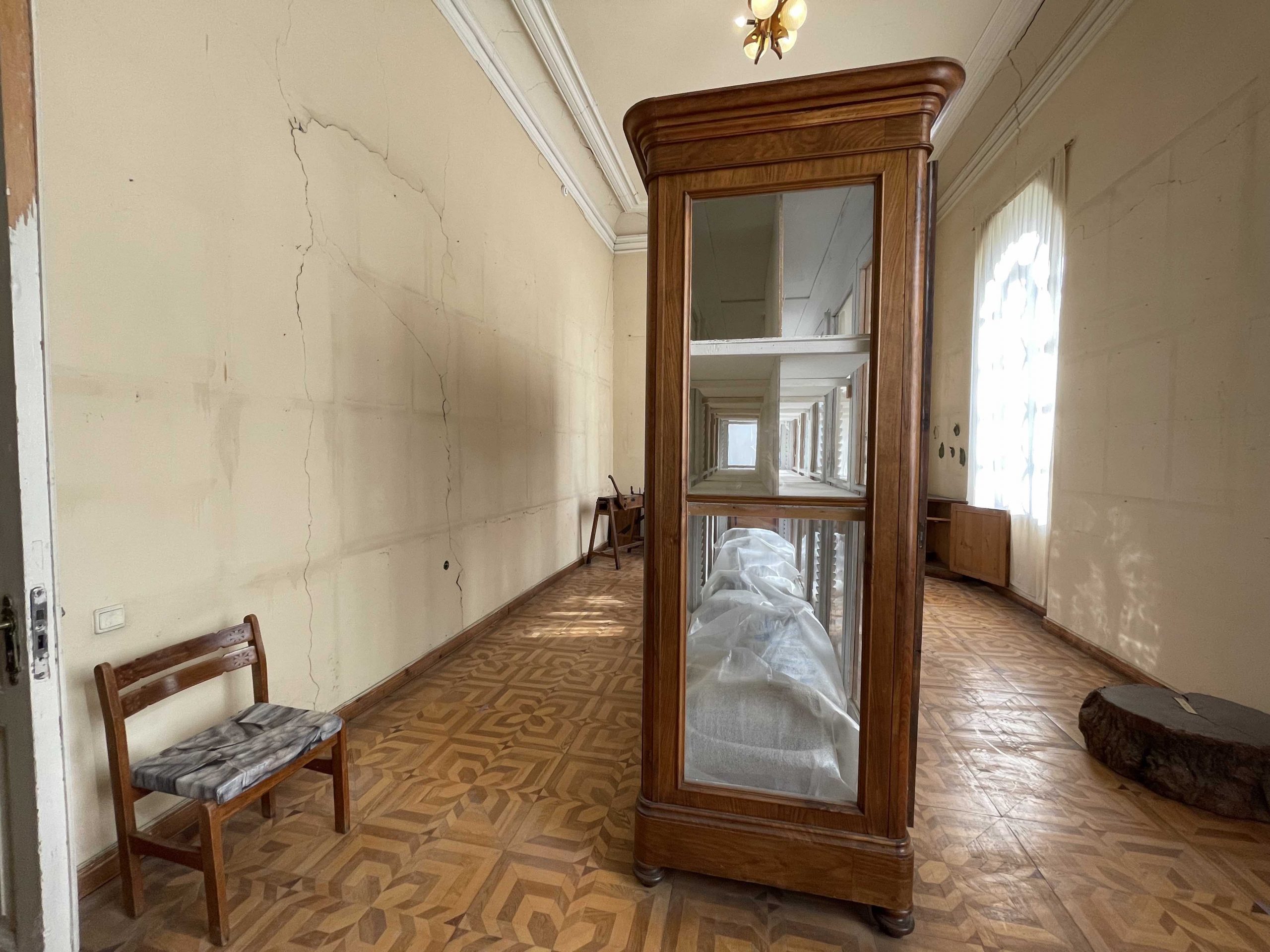
I thought of meditating and afterward going out to write this. But then I decided to stay inside the installation, just for a little longer, to think of those childhood memories of the garden and the carousels therein, coming through the jumping thoughts and worries; also to write down my thoughts, like the stream of consciousness, then leave my temporary cocoon and join the city, its noise and routine, where I hope this installation will appear in the future, and I still hope we can find ways to heal.
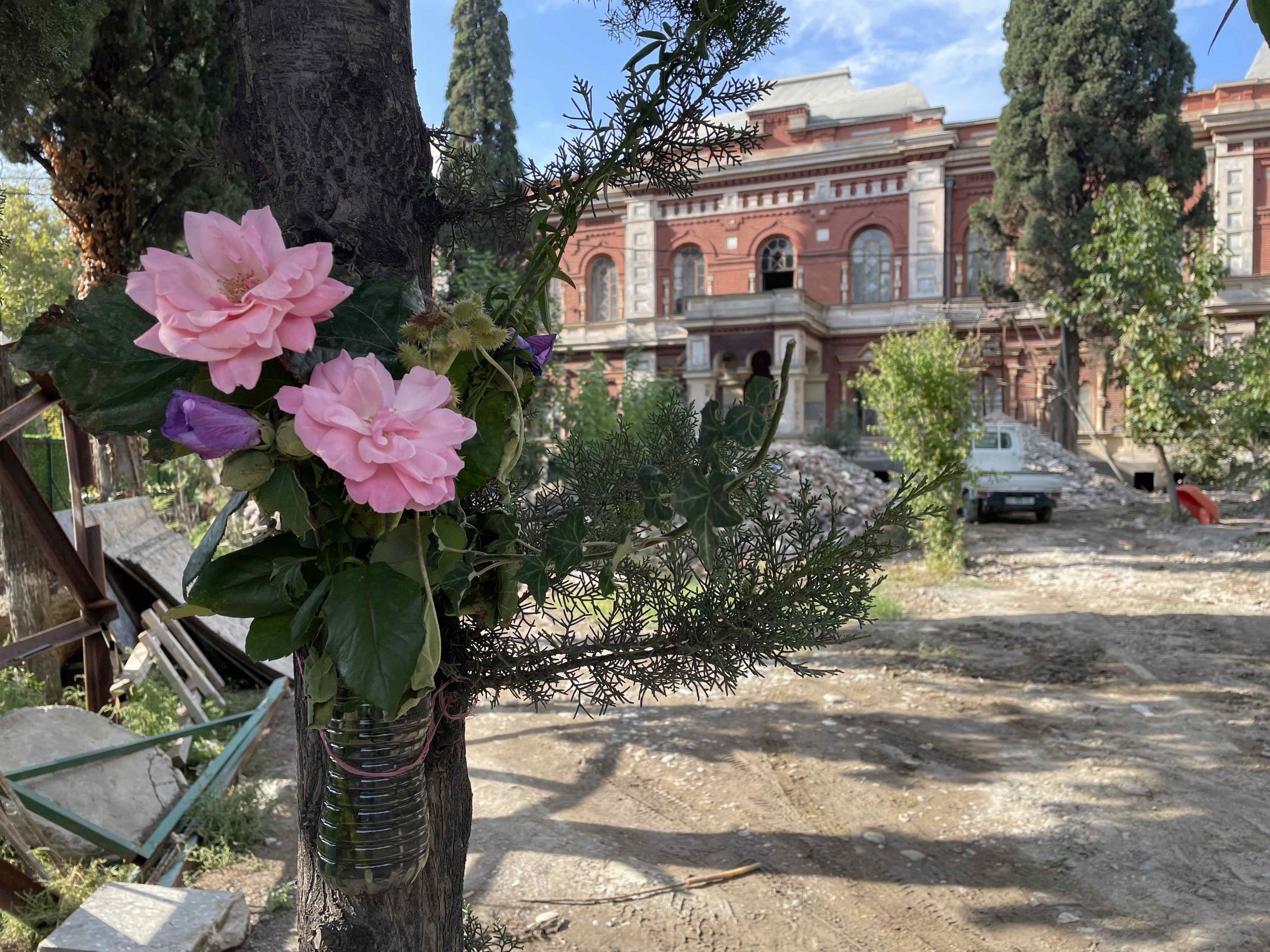
Text by Data Chigholashvili
Cocoon Room is an installation created by Carolanne Patterson during her residency at the State Silk Museum in autumn 2021, which she has generously donated to the museum. The structure of the installation was constructed by Factory.
Without Museum Objects is a series of events that respond to the Silk Museum’s rehabilitation period, its transitional stage, the spaces in the process of renewal, and the topics of exposition. The project is created and curated by Data Chigholashvili.
Carolanne Patterson’s residency at the State Silk Museum was part of the Art Prospect Network Residency program supported by CEC ArtsLink, the Trust for Mutual Understanding, and the Kettering Family Foundation.

Footnotes
| ↑1 | Cocoon Room will remain installed at the museum until the end of October, 2021. If you would like to schedule a visit and spend time inside the installation, please email in prior: silkmuseum.tbilisi@gmail.com |
|---|---|
| ↑2 | See: Dirker, O., and van der Kooy, K. (2019). Mulberry Tree Route in the Didube District of Tbilisi. In D. Chigholashvili, N. Palavandishvili, and M. Splint (eds.). Tbilisi – It’s Complicated (pp. 89-98). Eindhoven: Onomatopee. |
